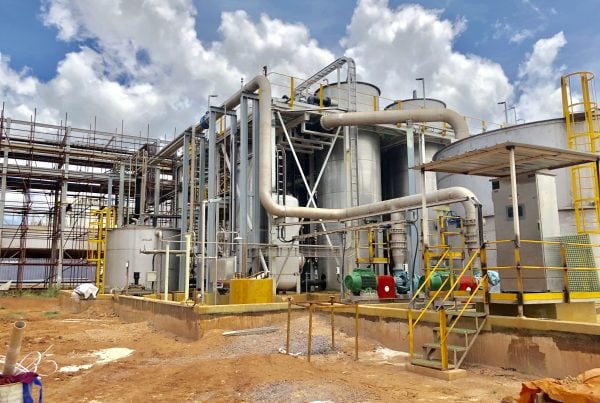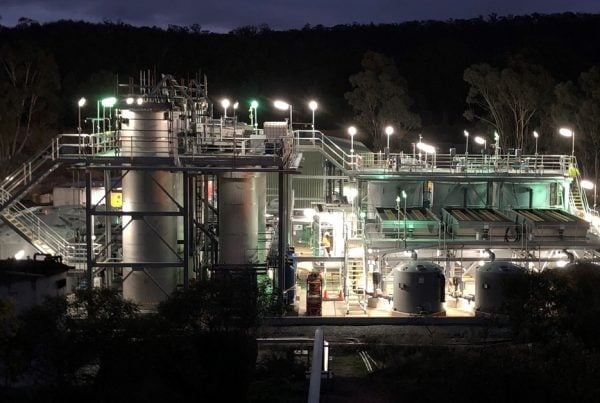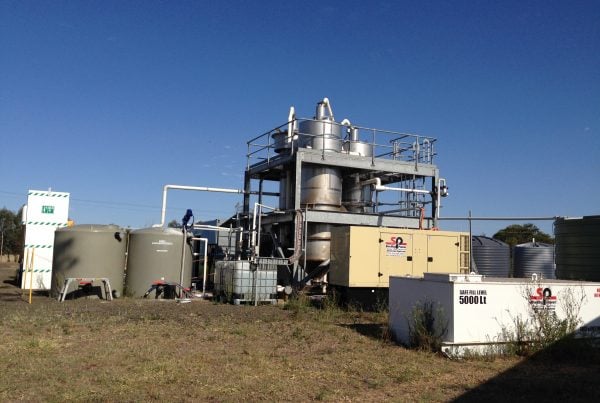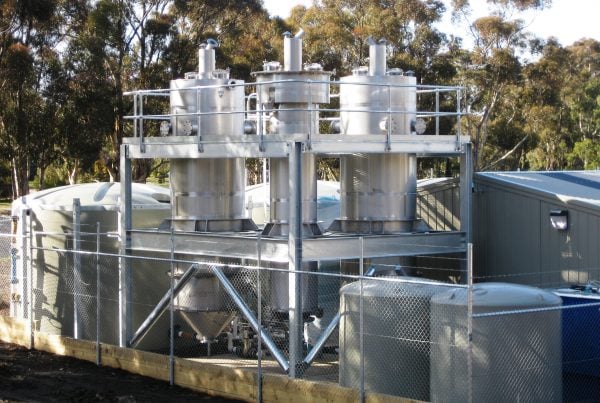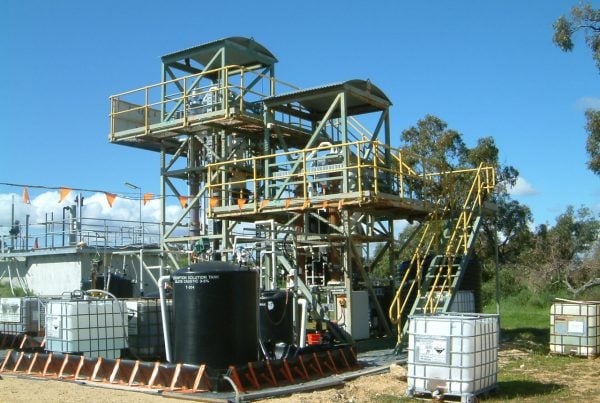Unlocking The Power Of Ion Exchange For Water Treatment
The Clean TeQ Approach
What Is Ion Exchange?
Ion exchange is a water treatment process where ions in a solution are exchanged with similarly charged ions attached to a solid resin. This process is used to remove contaminants from water, such as heavy metals or hardness-causing minerals, and can improve the overall quality and purity of the water.
Water treatment is a crucial process that ensures safe and clean water for various applications. One of the most effective methods used in water treatment is ion exchange, an ionic substance. But what exactly is ion exchange, and how does it work? In this blog, we will dive deep into the world of ion exchange and explore its power in water treatment. From understanding the different types of ion exchange resins to exploring their applications in both industrial and water treatment settings, we will cover it all. Additionally, we will discuss the advantages and disadvantages of using ion exchange in water treatment and shed light on the ion exchange process, regeneration, and wastewater management. Get ready to unlock the power of ion exchange and discover its role in ensuring clean and safe water for everyone.
Types of Ion Exchange Resins
Ion exchange resins are essential components of water treatment processes, providing effective purification and remediation solutions. With various types of ion exchange resins available, each with unique properties and functionalities, water treatment professionals can choose the most suitable resin for their specific needs.
Cation exchange resins are designed to eliminate positively charged ions from water sources. By targeting ions such as calcium ions, magnesium, and sodium, cation exchange resins effectively remove these ions, which are major contributors to water hardness and can cause scaling issues in plumbing systems and appliances.
Anion exchange resins, on the other hand, are formulated to remove negatively charged ions from water. These resins prove effective in eliminating ions like nitrate, sulfate, and chloride, which are common pollutants in water sources. By reducing the concentration of these ions, anion exchange resins enhance the overall quality of the treated water.
Click Below To Understand Ion Exchange Resin Selection and Supply
Cation Exchange Resins
Cation exchange resins, and cation exchangers, are essential components of water treatment processes. These resins are designed to efficiently eliminate positively charged ions, such as calcium, magnesium, and sodium, from water. With negatively charged functional groups, the resins attract and effectively exchange these positive ions. One notable advantage of cation exchange resins is their regenerative capability. By subjecting the resin to a concentrated solution of salt or acid, the adsorbed ions are replaced, allowing the resin to be reused for further ion exchange. This regenerative feature contributes to the cost-effectiveness of cation exchange resins, making them a preferred choice for water treatment.
Water softening systems greatly benefit from the use of cation exchange resins. These resins exhibit a strong affinity for positively charged ions that contribute to water hardness, particularly calcium, and magnesium. As water flows through a bed of cation exchange resin, the resin beads selectively attract and exchange these ions for sodium ions. This process effectively removes hardness-causing minerals, resulting in softened water. The exchange capacity of cation exchange resins determines the number of ions that can be exchanged, and it can be adjusted to meet specific softening requirements. Widely employed in both household and industrial applications, cation exchange resins have proven their efficiency and effectiveness in enhancing water quality.
Anion Exchange Resins
Anion exchange resins, an essential part of water treatment processes, efficiently eliminate negatively charged ions like nitrates and sulfates from water. These resins possess positively charged functional groups that attract and exchange anions, leading to enhanced water quality and reduced contaminant levels. Anion exchange resins find extensive usage in the treatment of drinking water, industrial process water, and wastewater. They are crucial for ensuring safe and clean water.
To maintain optimum efficiency, anion exchange resins need to undergo a regeneration process using a brine solution. Regeneration restores the resin’s ion exchange capacity, allowing it to be reused for further purification. These resins are commonly employed in deionization, demineralization, and water purification applications. They effectively eliminate a wide range of ionic contaminants, including fluoride, nitrate, sulfate, and chloride.
Applications of Ion Exchange Technology
Ion exchange is a widely used process with diverse applications in different industries and water treatment systems. It offers numerous benefits, including the removal of hardness ions like calcium and magnesium, and the selective removal of heavy metals such as lead or arsenic. Ion exchange resins, functioning as ion exchange materials, efficiently improve water quality by exchanging these ions with sodium ions. This prevents scale buildup and ensures safe drinking water. Moreover, ion exchange is extensively employed in the pharmaceutical industry for drug and chemical purification. The process aids in eliminating impurities and contaminants, thus ensuring the production of high-quality pharmaceutical products. In addition to this, ion exchange plays a crucial role in nuclear power plants by removing radioactive contaminants from cooling water. It contributes to maintaining the safety and efficiency of the power plants. From water treatment processes to the pharmaceutical and nuclear industries, ion exchange demonstrates its versatility and effectiveness in numerous fields.
Industrial Applications of Ion Exchange
Ion exchange, an essential process in various industries, serves multiple purposes. In the power generation sector, it is employed to eliminate impurities from boiler feedwater, preventing scaling and corrosion in the steam system. The chemical industry relies on ion exchange for the purification of process water and the recovery of valuable chemicals from wastewater streams. Ion exchange’s versatility is evident in the food and beverage industry, where it is instrumental in water softening, heavy metal removal, and product quality improvement. Chemical manufacturing and food and beverage production also benefit from ion exchange as it aids in the removal of specific contaminants or ions from water. Furthermore, industries such as metal recovery, desalination, and wastewater treatment widely employ ion exchange for their operations.
Advantages of Exchange Ions in Water Treatment
The use of ion exchange in water treatment provides several advantages that make it a preferred method.
Ion exchange, a highly effective technique used in water treatment, offers numerous advantages. A notable benefit is its ability to remove harmful contaminants, such as heavy metals and chemicals, from water, making it an invaluable tool in water purification processes. Moreover, ion exchange is both cost-effective and scalable, allowing for easy adjustment based on specific requirements. With its selective removal of specific ions, ion exchange can be customized to address various water sources. Notably, it enhances the taste, odor, and clarity of the water, elevating its desirability for consumption purposes. What’s more, ion exchange systems boast low maintenance and longevity, ensuring reliable and durable water treatment solutions.
Water Treatment Applications of Ion Exchange
Ion exchange, an essential water treatment process, is widely used across industries such as pharmaceuticals, food and beverage, and electronics manufacturing. By carefully selecting the appropriate ion exchange resin and operating conditions, specific contaminants can be selectively removed from the water, ensuring the highest water quality standards. From removing heavy metals and organic compounds to addressing the issue of hard water, ion exchange offers a versatile solution for various water treatment applications.
In terms of water softening, ion exchange excels at removing hardness-causing minerals like calcium and magnesium by exchanging them with sodium or potassium ions. This eliminates scale buildup and improves the overall quality of water. Additionally, ion exchange proves effective in removing harmful substances such as nitrates, sulfates, and arsenic, making water safe for consumption and use. Its wide pH range and high selectivity make ion exchange an optimal choice for addressing diverse water quality concerns.
Advantages of Exchange Ions in Water Treatment
The use of ion exchange in water treatment provides several advantages that make it a preferred method.
Ion exchange, a highly effective technique used in water treatment, offers numerous advantages. A notable benefit is its ability to remove harmful contaminants, such as heavy metals and chemicals, from water, making it an invaluable tool in water purification processes. Moreover, ion exchange is both cost-effective and scalable, allowing for easy adjustment based on specific requirements. With its selective removal of specific ions, ion exchange can be customized to address various water sources. Notably, it enhances the taste, odor, and clarity of the water, elevating its desirability for consumption purposes. What’s more, ion exchange systems boast low maintenance and longevity, ensuring reliable and durable water treatment solutions.
Disadvantages of Ion Exchange in Water Treatment
Ion exchange in water treatment does have certain disadvantages that need to be taken into consideration. One notable drawback is the high operating costs associated with ion exchange systems, which require regular maintenance and replacement of resin. These costs can add up over time. Additionally, the capacity of ion exchange systems is limited, meaning they have a finite ability to remove contaminants from water. To maintain optimal performance, these systems may need frequent regeneration or replacement. Proper disposal of the regenerators used in ion exchange is also a concern, as these chemicals can be environmentally hazardous. Resin fouling is another potential issue that can occur if the system is not properly maintained, leading to a reduction in effectiveness. While ion exchange is highly effective at removing specific contaminants like heavy metals or hardness ions, it may not be as effective for other types of pollutants.
The Ion Exchange Process
The process of ion exchange, an essential technique in water treatment, enables the removal of contaminants and the enhancement of water quality. Ion exchange involves the use of specialized resins that can selectively eliminate ions from water. These resins, usually in bead or granule form, possess functional groups capable of exchanging ions with those present in the water.
Through the ion exchange process, water is passed through a resin bed, where ions in the water are exchanged with ions on the resin beads. Cation exchange resins are designed to eliminate positively charged ions such as calcium, magnesium, and sodium ions. On the other hand, anion exchange resins focus on the removal of negatively charged ions like nitrate, sulfate, and fluoride ions. The resin releases the exchanged ions into the water while retaining unwanted ions.
Ion exchange is an effective method for removing heavy metals, hardness ions, and ionic substances, and it finds applications in water softening, dealkalization, and deionization. The process is influenced by factors such as pH and conductivity, which impact the ion exchange capacity and selectivity of the resin.
Ion Exchange Regeneration and Wastewater
Ion exchange resin regeneration is an essential process for maintaining the effectiveness of water treatment systems. To ensure continued contaminant removal, the ion exchange resin is restored to its original state through various regeneration methods. These methods include chemical regeneration, thermal regeneration, and biological regeneration. Chemical regeneration involves using specific chemicals to rejuvenate the resin, while thermal regeneration employs heat to strip off the adsorbed ions. Biological regeneration utilizes microorganisms to break down the absorbed substances. Each regeneration method has its own advantages and disadvantages, allowing water treatment facilities to choose the most suitable approach for their specific needs.
The ion exchange regeneration process generates wastewater as a byproduct, which requires careful handling and treatment. This wastewater contains the contaminants that were removed from the resin during regeneration and may contain hazardous chemicals or high levels of contaminants. Proper treatment and disposal procedures should be followed to ensure environmental safety. Efforts should also be made to minimize the volume of wastewater generated through process optimization and the recycling of rinse water. By implementing these strategies, the environmental impact of ion exchange regeneration can be significantly reduced.
Contaminant Removal in Ion Exchange Regeneration
Ion exchange regeneration plays a vital role in maintaining the efficiency of water treatment systems. During the ion exchange process, certain ions in the water are exchanged for other ions on a resin bed. Over time, the resin bed becomes saturated with unwanted ions and needs to be regenerated. This involves flushing the resin bed with a concentrated salt solution to replace the unwanted ions with new ones. By regenerating the ion exchange resin, its capacity for exchanging ions is restored, allowing it to effectively remove contaminants in subsequent water treatment processes.
However, the wastewater produced during regeneration contains high levels of contaminants and must be properly treated before disposal. Various methods can be used to treat wastewater, such as chemical precipitation, filtration, and evaporation. These methods aim to remove the contaminants from the wastewater, ensuring that it meets the required discharge standards. Chemical precipitation involves the addition of chemicals to the wastewater to form insoluble precipitates that can be easily filtered out. Filtration physically removes suspended particles and solid matter from the wastewater. Evaporation, on the other hand, involves heating the wastewater to separate the water from the dissolved contaminants.
Contaminant removal in ion exchange regeneration is crucial for environmental reasons and the proper functioning of the ion exchange system. By effectively removing contaminants, the regenerated ion exchange resin can continue to efficiently remove harmful substances from water, allowing to production clean and safe drinking water.
Factors Affecting Ion Exchange Performance
Several factors must be considered to ensure optimal performance in ion exchange processes. One crucial factor affecting ion exchange performance is the pH of the water being treated. The pH can significantly impact the ion exchange efficiency and effectiveness. Similarly, another important factor is the water temperature as it plays a role in ion exchange performance. Higher temperatures can enhance the rate of ion exchange, but they may also result in system fouling, negatively affecting the overall performance. Additionally, the water flow rate is a crucial factor to consider. Proper flow rates are necessary to provide sufficient contact time for effective ion exchange to occur, ensuring maximum efficiency. Another critical factor that affects ion exchange performance is resin selection. When selecting the resin, choosing the right type and size that aligns with the specific water treatment goals is essential. Furthermore, determining the optimal frequency for regenerating the ion exchange resin is vital to maintain its performance over time. Lastly, it is important not to overlook the pretreatment requirements. Pre-filtration or conditioning may be necessary to remove particulates or adjust the water chemistry before ion exchange, ensuring optimal performance in the entire water treatment process.
pH and Conductivity in Ion Exchange
The pH and conductivity levels impact the effectiveness of ion exchange for water treatment. Maintaining the optimal pH range, typically between 6 and 8, is crucial for ensuring the proper performance of ion exchange. Extreme pH levels have the potential to cause damage to the resin beads and diminish their ability to effectively remove contaminants. Additionally, conductivity, which measures water’s electrical conductivity, plays a role in ion exchange performance. Water with higher conductivity levels can lead to increased fouling and reduced efficiency of the ion exchange process. Effective optimization of ion exchange for water treatment applications involves monitoring and adjusting both pH and conductivity levels.
CIF® Technology Summary
Our Continuous Ionic Filtration (CIF®)technology uses continuous ion exchange and physical filtration (if required) to selectively remove contaminants from water. The technology is proven and built on the foundations of ion exchange, a process that has been used in the water industry for over 50 years.
CIF® uses a moving bed of charged resin beads to attract and remove ionic species from water whilst filtering the water of suspended solids, ensuring optimum efficiency and continuous high performance. Commercially available ion exchange resin can be used in the system, with the resin type chosen based on the contaminants being targeted.
Conclusion
In conclusion, ion exchange is a powerful and versatile method for water treatment. It offers numerous advantages such as effective removal of contaminants, versatility in applications, and ease of operation. However, it also has some disadvantages that need to be considered. Understanding the ion exchange process, regeneration techniques, and factors affecting performance is crucial for maximizing its benefits. If you want to unlock the full power of ion exchange for water treatment, get in touch now.
